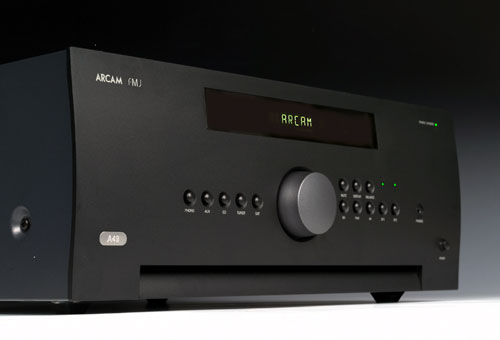Arcam's Latest Integrated Amp: The A49
rcam originally launched the ambitious A49 at the 2014 Munich Hi-End Show, but now that units have actually started shipping, it’s time to look at the various features that make this unusual integrated amp newsworthy. Straight off the bat comes the price tag -- £3750 in the UK, $5750 in the US. That places Arcam, a brand best known for solid, high-value products, right in amongst the aspiring highest-end electronics manufacturers -- all of whom have a serious integrated front and center in their range. That’s quite a step. Then there’s the fact that although the company is based in Cambridge, just northeast of London, heart and birthplace of the UK audio industry, the A49 is built in Rochester, NY in the United States. Look at the specs, the material value and the aggressive pricing and you’d have guessed that the company would have looked east for its off-site manufacturing, not west. But perhaps the most remarkable aspect of the A49 is its class-G output topology. Whilst most of us are reasonably familiar with both class A and class AB, along with the cost/benefit arguments for each, and an increasing number of us are getting our heads around class D, be honest, how many of you have come across class G? As output topologies go it’s complex and costly to execute -- which is why it’s seldom seen. But what it offers is -- on paper at least -- a far more elegant solution to adding efficiency to class-A operation without introducing the switching distortion inherent in class AB. Glass G uses a second larger power supply to supplement a basic class-A circuit, with the additional current available on demand. In effect, it shifts the switching from the amplification device to the power supplies feeding it -- which helps explain the cost and complication: Not only are power supplies full of expensive components, but the quality of those components is itself critical, and creating the circuit that draws enough extra power but no more is far from simple. We’ve all seen (and heard) the latest-greatest solutions to the class-A dilemma many times before. As always, the proof of the musical pudding will be in the listening, and this topology, like most of the others, succeeds (or fails) by dint of shifting or redefining rather than eliminating the problem. That’s a judgment that will have to await the imminent arrival of the review unit, but Arcam founder John Dawson, the man responsible for the A49’s design and development, is uncharacteristically bullish about its capabilities, actively suggesting its comparison to products that cost considerably upwards of 50% more. On paper at least, it’s a fight the A49 seems well equipped to take on: Dual mono and fully differential, it offers a full set of facilities (not the hairshirt volume control and input switching only of many audiophile integrateds), including a worthwhile moving-magnet phono stage, tape loop and headphone socket, balanced or single-ended inputs and outputs, all backed up by an output stage that will deliver 200Wpc into 8 ohms and 400Wpc into 4 ohms (the first 100 watts being claimed as class A). Time will tell, but with a preamplifier and power amps
that are switchable between stereo, dual-mono and bridged modes to follow, it looks like
we could have a new high-value, high-performance contender on our hands. |

